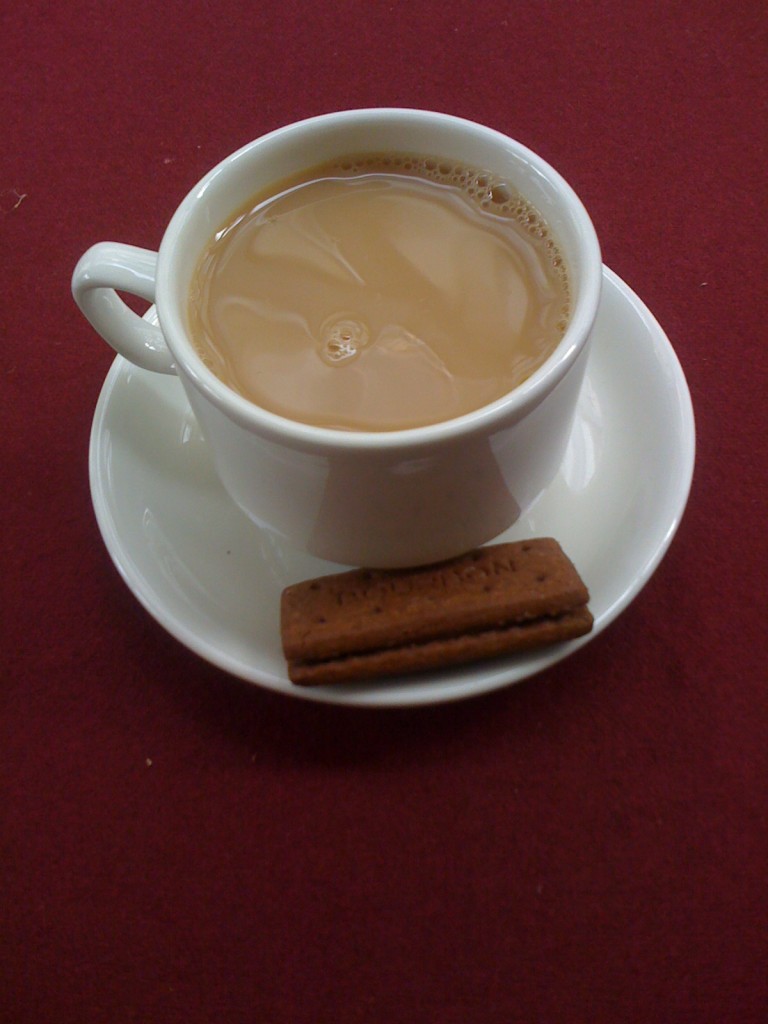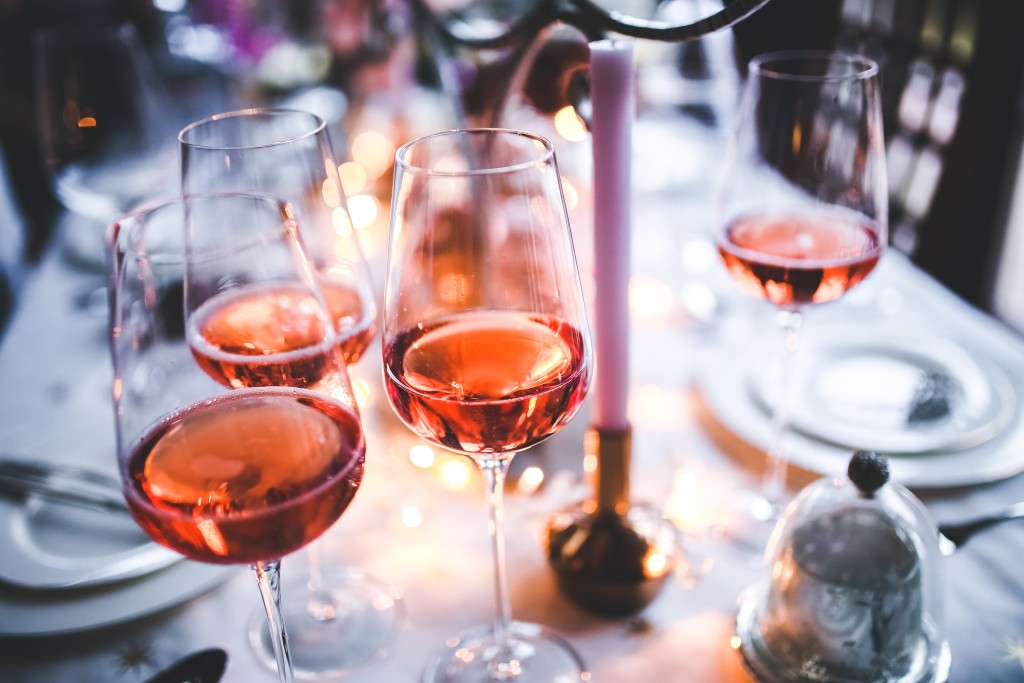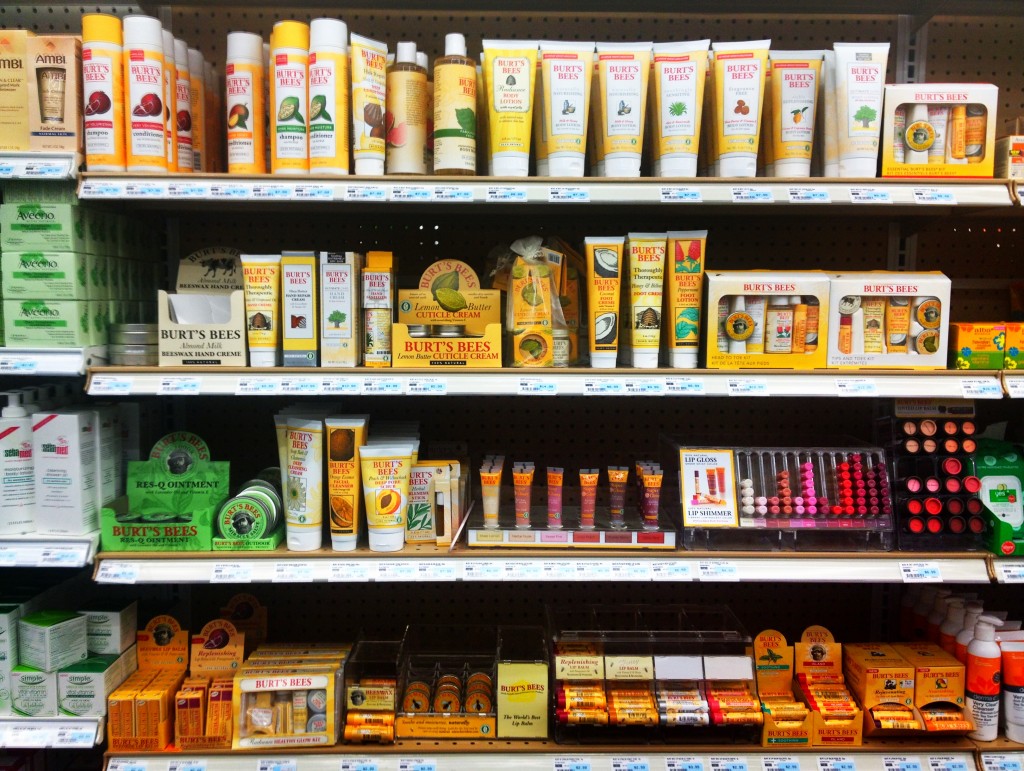Imagine a world where most of the global adult population consume a gentle, natural, herbal drug every day that contains psychoactive compounds that relax and revive them. It is often consumed in a social ritual of bonding, conversation and empathy. And this is seen as quite unremarkable.
There are occasional reports of scientists discovering surprising health benefits. Although few are that surprised as it is seen in common sense terms as an essential antidote to the alienating speed and pressures of modern life. This makes for household name brands that trade on their ‘niceness’. And with sales running into the billions they can afford to advertise in expensive media like commercial TV. Which is apt because people do love to enjoy this product curled up on the sofa during the ad breaks.
That world already exists. And the product is tea.
Which contains not only caffeine but also theobromine, theophylline and other psychoactive drugs that lead to tea (not coffee) being what is given to shock victims – because of its relaxing properties. Admittedly it’s a mild high. But one people would find hard to do without? Chocolate could be another reference point, containing psychoactive compounds that increase circulation and produce “bliss”. Taken in the heady brews the Mayans used to enjoy, cacao is properly intoxicating. While Casanova was only the first of many to espouse its seductive aphrodisiac properties.
I’ve chosen these reference points (rather than tobacco and alcohol) because they are benign; quite soft, feminine, authentic and in tune with today’s culture of hipster beards and knit your own. Chocolate and tea being benign I suspect is an important marker for marketing cannabis – light years from its edgy criminalized underclass ‘skunk’ image today.
How to market a cannabis-based brand? The core construct of modern marketing is positioning; what do you do for who?
Cannabis I’d argue needs to reposition into middle England; to appeal to middle class adults (the key mass premium lifestyle spenders) and their aging parents. And that’s a much easier task in some ways because those generations had more positive experiences and views of pot in their own youth. Tony Blair may have passed on the spliff in the 1970s but he was a rare square in those times if so. And both age groups are stridently clinging onto their youth, packing out rock concerts with fans at times as old as bands like the Rolling Stones and Spandau Ballet.
To capture this middle class Britain, pot needs to be ‘the next innocent’ – whereas it is currently seen as impure, industrial strength, even dangerous. It also needs to capture the huge medical cannabis market among an ageing population: Projected sales of cannabis for medical use are set to increase to $13.4 billion in 2020 from $3.6 billion in 2015, largely due to demand from an aging population with conditions such as arthritis, Alzheimer’s disease and glaucoma.
In perceptual terms it needs to go from being seen as a drug (illegal, dangerous) to something herbal, natural, normal and even good for you. Which some argue it is.
It just isn’t cool. A generation or two ago smoking a bit of weed was part of the middle class rite of passage; like playing guitar, having dyed hair or traveling. It was all about being a bit Bohemian. At least until graduation. ‘Spliff’ hung on during the rave years, at least in the ‘chillout’ room. But now it is seen (in the guise of “Skunk”) as the choice of the council estate chav. And only encountered by our 30 something core consumer in direly unpleasant situations, such as an Amsterdam stag do. There are few consumer brands (super-strength cider and pound shops spring to mind) with such a downmarket and “shit” image.
The big commercial opportunity is to compete with wine for the dinner party generations. Premium strains, Nespresso style delivery systems… This is where the billions will roll in. Just as mobile operators make most of their income from contract customers in their mid 20s upwards, not from ‘digital native’ younger consumers constrained to ‘pay as you go’. It’s simple arithmetic. Under 30s’ households in the UK spend on average less than £50 per week on food drink alcohol and tobacco – less than any other age group under 70. You can’t even get a credit card usually these days unless you are over 25. Go figure.
It’s also a tenable ethical approach – nobody wants to see 15 year olds being the core target audience for this nascent industry and it is highly likely to have restrictions like those applied to alcohol prohibiting the uses of creative devices in its marketing that appeal to the under 25s. Marketing to their parents will meanwhile probably ensure it is as uncool as ‘dad dancing’.
If we shift the age target (the who) we also need to re examine the what? Positioning cannabis as a transgressive rebellious choice, like having facial piercings is hardly likely to appeal to Daily Mail reading grannies with a bit of arthritis. Nor their aspiring children rehearsing dinner parties in their cramped shared flat while dreaming one day of a mortgage on their own home with – gasp – a dining room.
What we know about adults today that is highly relevant is that they feel stressed, rushed and drained by the pace of modern life. What they are crying out for is a product that helps them relax. That’s what cannabis can do, if you strip away the spiritualized intoxicating highs of excessive consumption and all of the cool – it helps you to chill.
It also helps that pot doesn’t make you drunk and alcohol dependent. Drinking alcohol is going out of fashion almost as fast as smoking (we’ll come back to that) and sugary drinks. The BBC reported on ‘the rise of the non drinker’ in 2014 and their long term analysis of young adults is impressive “according to National Health Service statistics the proportion who said they had ever drunk alcohol fell from 61% to 45% between 1996 and 2010.” For the under 26’s (now the under 33’s seven years after this survey was recorded) it is becoming the exception not the rule. But people still need to chill.
Considering a moderate and ‘sharing’ inclined millennial generation, fond of beards and woolly hats, rejecting McDonalds in favor of burritos, living in ‘Hipsturbia’ city centers walking distance from artesan cafes and farmers markets…
…going this route would probably not alienate younger adults that much either. So it’s not to say the brand would be ‘only for the over 30s’ but that it would be stretched a long way from the chav, teen, immature image it has now. It would be a stretch into middle Britain, heartland aspirations, into ‘Waitrose Country’ or at least Holland & Barrett. If cannabis can become so normal it is sold (in some form) at M&S it will have achieved the mass acceptance that vibrators managed in 2007 when Boots first started stocking them (and their sales exceeded 2 million).
This is the audience that brands like Ben & Jerry’s and Amazon Prime were made for.
How could they be reached effectively?
At this stage any speculative marketing thinking is going to look ‘far-fetched’. It would take time for a ‘new normal’ to develop. But what we can draw upon to make it look a little more plausible is the kinds of strategies that have worked for others in establishing new categories in modern marketing. (Or as they say in Father Ted “the sort of thing”):
The new Fondue Set
How to reinvent the bong or something analogous for the middle class dinner party? This was the success of Fondue sets in the 1970s. And the Nespresso machine grew largely by creating a talking point ritual at young middle class dinner parties: offering guests a test drive and spreading in adoption by imitation. There are some new variants based on vaping that could be looked at. Or maybe it is post ‘smoke’ (see 4.)?
A Tea of Pot
Look at the rise and rise of herbal tea. In West Coast USA it is fashionable to have a drawer of 50 or more teas to offer to guests. The drink of the over stressed (and neurotic) modern open collar worker. Mint tea. From fabulous brands like Tea Pigs. The natural starting point to challenge all the ‘skunk’ perceptions being a cannabis based herbal tea.
Connoisseur-Grade Grass
Today’s luxury is a return to the discourse of tasteful appreciation – you don’t buy the handbag for the bling logo, but rather for the artisanship, the heritage; from crafty fashion brands like Alice Temperly and Anya Hindmarch. The genius of Waitrose being applying the foodie provenance storytelling applied to wine, to humdrum choices like butter and eggs.
Nothing could dispel the negativity that came with industrialized cheap rough ‘skunk’ than a bit of refined connoisseurship. After all where would the alcohol market be if all you could buy was Diamond White cider? Elite strains based upon flavor and effects already exist. It’s about marketing the category like a wine or jazz shop, as a community of taste.
Liquid Bliss
Another way to go with cannabis would be to make it an ingredient. Few people buy neat ethanol, why neat grass? According to Wikipedia “Coca leaf extract had been used in Coca-Cola products since 1885, with cocaine being completely eliminated from the products on or around 1929.” In 2010 this provenance was revived in Bolivia with the launch of their Coca Colla – a new energy drink containing coca plant extract and endorsed by the country president (himself a former coca farmer). Imagine a variant of Red Bull with added cannabis extract, probably in a mild dosage.
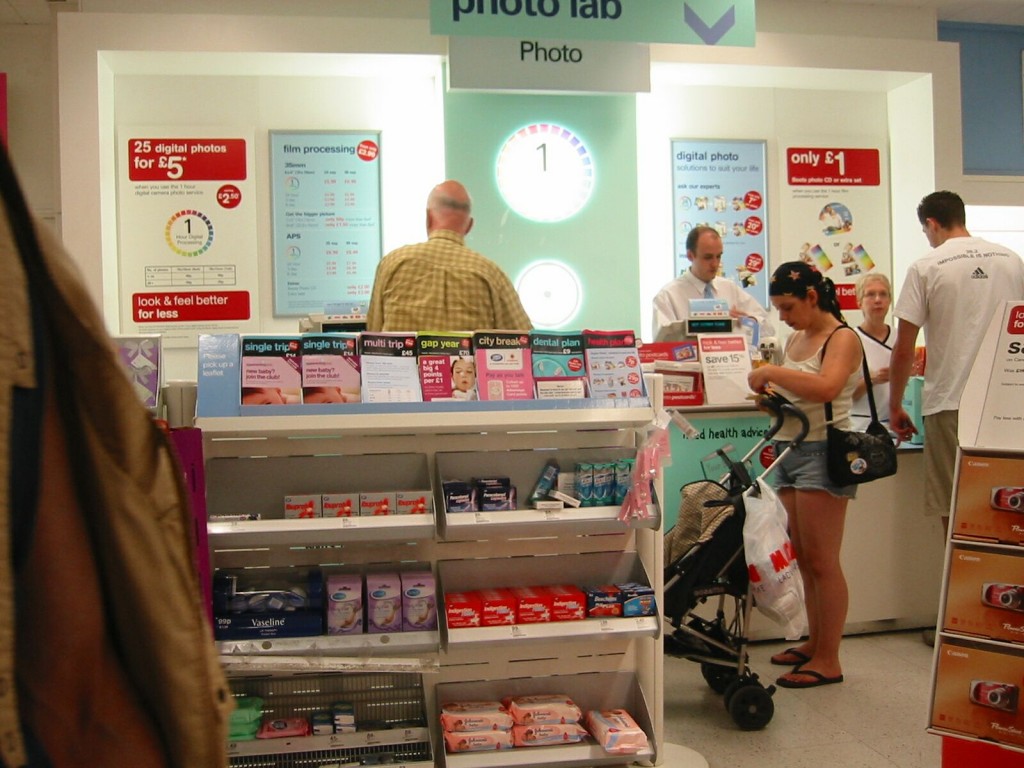
‘New Wellness Relaxtion Tinctures? – Certainly Miss – just over there in Aisle 3’ (Source: Wikimedia Commons)
The Wall St Journal reports a growing market for such chill-out beverages:
Amid booming sales of energy drinks spiked with caffeine and other stimulating ingredients, some people are heading to the soda aisle for drinks that promise the opposite effect. With names like Neuro Bliss, Marley’s Mellow Mood (as in Bob), and Just Chill, the products aren’t marketed as medicine, but as a way to relax without turning to more traditional, if sometimes imperfect, measures like taking prescription drugs or having a few beers
Vape
Here’s the most obvious repositioning away from one major problem with pot smoking – the smoking bit. Electronic vapor based alternatives to smoking are gaining ground with the middle classes. Business Insider reports:
Since 2008, the number of U.S. vape shops has grown to about 8,500, and the sale of electronic cigarettes and supplies climbed to $3.5 billion, according to Wells Fargo Securities analyst Bonnie Herzog. She expects U.S. use of e-cigarettes and vaporizers to overtake combustible cigarettes in 10 years
These vape shops see high potential in medical and legal marijuana as a secondary product:
Tulsa, Oklahoma-based Palm Beach Vapors has opened 14 shops and is in the process of starting another eight, said Chip Paul, CEO and co-owner. He told Reuters that 90 percent of the franchisees eventually hope to capitalize on marijuana-related sales
Peace Pipe
Espouse a cause. Like Tom’s shoes. Be properly new hippy and worth having. Fair trade deals for growers and their communities. Kia style crowdfunding. Perhaps a focus on ‘Peace’ as that natural counterpart of Coke’s espousal of a more asocial ‘Happiness’? I don’t think you would have to do this to sell this product to the middle classes but there might be some implicit work of some sort to assuage any guilt or misgivings. And the world needs more voices for change , empathy and development.
Heritage Hemp Ale
Imagine a craft beer, a bit like Adnams, from East Anglia, which contained cannabis. Beer based on hemp rather than hops and containing THC was popular in the rope and cloth making East Anglia of five hundred years ago (and craft beers like ‘Joint Effort’ in the USA are starting to explore this heritage in the context of Cannabis legal states). What could be more Middle England than real ale? It would bring even the Antiques Roadshow and National Trust-visiting Conservatives something from their world.
There are doubtless many hurdles to be cleared before any of this could become a reality of course. And the process of public debate and engagement – in the media but also in social media would doubtless shape the eventual natural approach of brands to this arena. Plus it will be down to entrepreneurs and their vision – whether they would rather create a Ben & Jerry’s or Haagen Dazs type of brand.
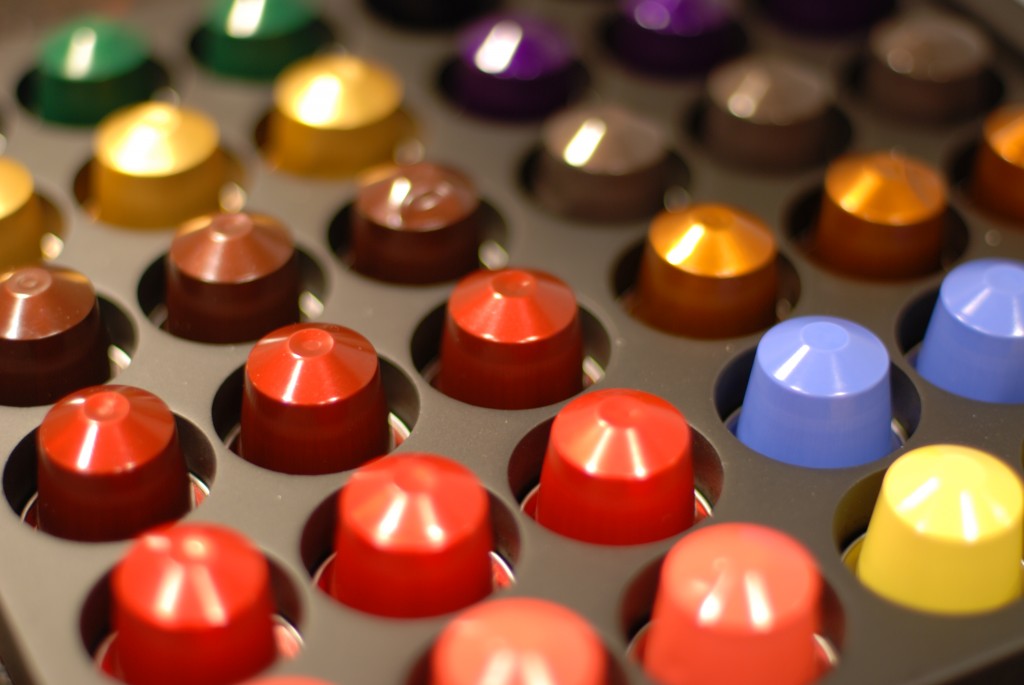
‘The big commercial opportunity is to compete with wine for the dinner party generations. Premium strains, Nespresso style delivery systems… This is where the billions will roll in’ (Source: Wikimedia Commons)
But it’s clear from a quick dive into the possibilities that there is a huge disruptive commercial and cultural opportunity here that fully justifies claims of a future market running to tens of billions in sales. One that the Richard Bransons of this world would do well to have a closer look at.
Just don’t think of it as pot… Think of it as the next tea.
a thought piece by John Grant – author of The New Marketing-Manifesto, and five other books.

